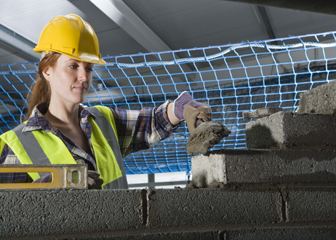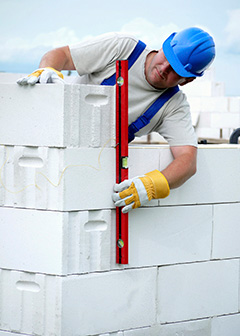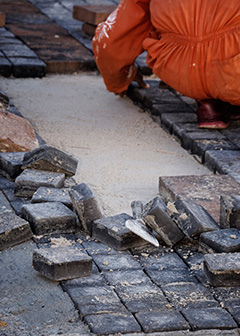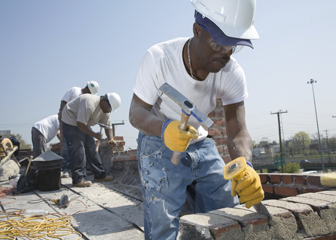Summary

| Quick Facts: Brickmasons, Blockmasons, and Stonemasons | |
|---|---|
|
$45,410 per year
$21.83 per hour |
|
| High school diploma or equivalent | |
| None | |
| Apprenticeship | |
| 104,800 | |
| 40% (Much faster than average) | |
| 41,800 | |
What Brickmasons, Blockmasons, and Stonemasons Do
Brickmasons, blockmasons, and stonemasons (or, simply, masons) use bricks, concrete blocks, and natural stones to build fences, walkways, walls, and other structures.
Work Environment
The work is physically demanding because masons often must lift heavy materials and must stand, kneel, and bend for long periods of time. They usually work outdoors, and poor weather conditions may reduce work activity. Most masons work full time.
How to Become a Brickmason, Blockmason, or Stonemason
Although most masons learn through a formal apprenticeship, some learn informally on the job. Others learn through 1- or 2- year mason programs at technical colleges.
Pay
In May 2010, the median annual wage of brickmasons and blockmasons was $46,930, and the median annual wage of stonemasons was $37,180.
Job Outlook
Overall employment of masons is projected to grow 40 percent from 2010 to 2020, much faster than the average for all occupations. Population growth will create a need for schools, hospitals, apartment buildings, and other structures, but construction of these buildings may be delayed as state and local governments face budget shortfalls. Highly skilled masons with a good job history and work experience in construction should have the best job opportunities.
Similar Occupations
Compare the job duties, education, job growth, and pay of brickmasons, blockmasons, and stonemasons with similar occupations.
O*NET
O*NET provides comprehensive information on key characteristics of workers and occupations.
Contacts for More Information
Learn more about brickmasons, blockmasons, and stonemasons by contacting these additional resources.










